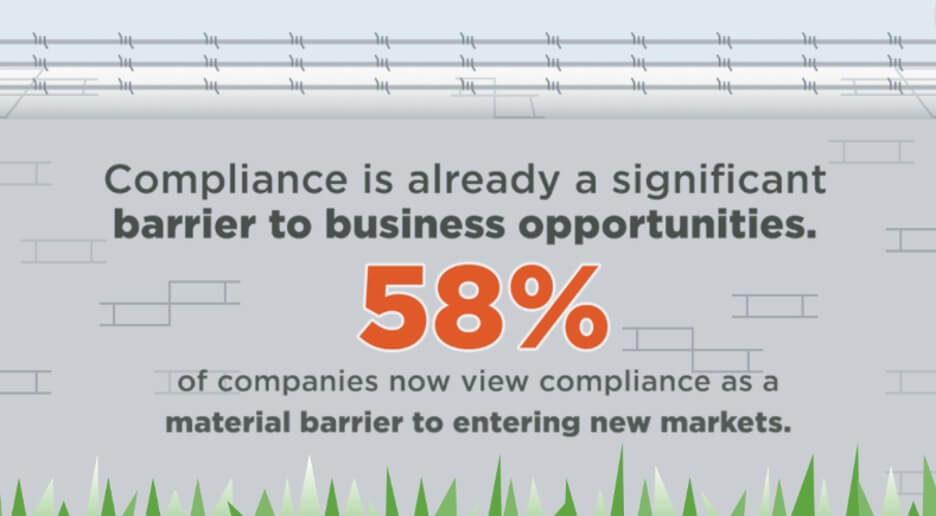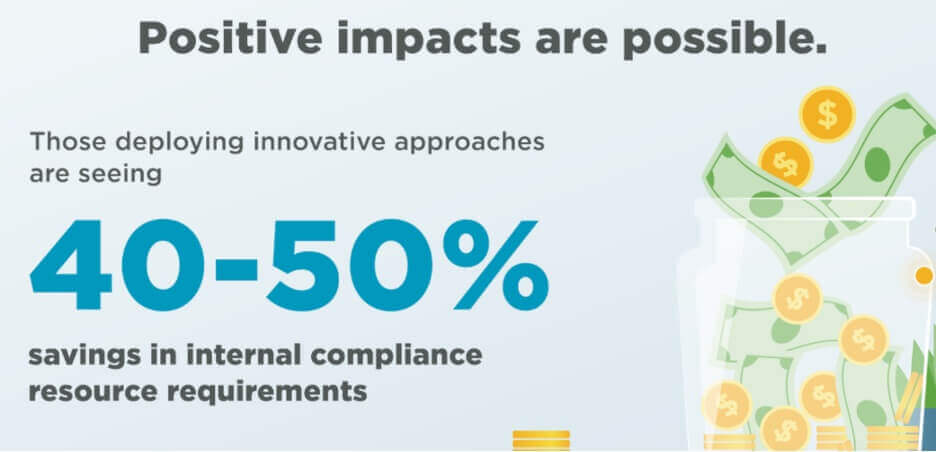The compliance function has a lot of work to do in the modern organisation. From monitoring all business processes and procedures, to ensuring that the company complies with all legal and ethical standards, and onwards, to managing flows of information by researching, recording and analysing data. High expectations are placed on the compliance team to do their jobs accurately and efficiently.
Thankfully, powerful compliance workflow automation software is readily available to compliance teams to make their activities run as smoothly as possible.
What is compliance workflow automation?
As the name implies, compliance workflow automation is the process of automating compliance procedures that would otherwise be done manually by employees. Compliance technology runs compliance processes autonomously from start to finish, using artificial intelligence (AI) to drive the automation.
The core benefit of this workflow automation technology is that it allows personnel to streamline their compliance workflows, such as risk management and assessments, corrective action planning, control evaluations and testing. It eliminates tedious, manual, time-consuming processes, freeing up the team to focus on the more important tasks, while also improving the accuracy and efficiency of the function itself.
Today, compliance workflow automation is a must for practically every organisation in every industry. The technology ensures that company policies and procedures are designed in accordance with legal and regulatory requirements, and that those policies and procedures are being followed and observed by all members of the organisation.
No wonder, then, that the compliance management software market is on the rise.
Valued at USD 32.1 billion in 2020, it is projected to reach USD 74.8 billion by 2028, growing at a CAGR of 10.9% over the forecast period.

(Image source: verifiedmarketresearch.com)
Why organisations are investing more in compliance workflow technology
By necessity, compliance is a time-consuming, resource-intensive tangle of processes and policies. Yet, compliance professionals are often viewed as innovation killers – while often shouldering the blame for compliance violations when things go wrong. As such, 58% of businesses view the associated costs and constraints of compliance as a barrier to embracing new opportunities.

(Image source: coalfire.com)
The need for a robust regulatory compliance program is unavoidable, however. The good news though, is that compliance workflow automation technology can tear down these barriers.
Automation accelerates the slow, mundane processes of running a compliance program, while simultaneously generating compliance data about how the program is performing. This frees up time for compliance teams to evaluate the compliance implications of new business opportunities – and make sharper, better, and more informed decisions and recommendations for expansion of the business.
What’s more, businesses that deploy innovative compliance approaches see 40-50% savings in their internal compliance resource requirements.

(Image source: coalfire.com)
Top reasons to automate your compliance workflow
Workflow automation brings a whole host of operational benefits to your compliance teams, and, by extension, your entire business. No matter how complex your processes, compliance workflow automation software can streamline your processes.
⏩ Read more: What Is Workflow Automation and Does It Benefit Your Business?
Let’s consider the top reasons to start automating your compliance workflows.
Go paperless with digital forms
Compliance workflow automation software eliminates the piles of paper forms that typically clutter up compliance offices. Compliance software allows you to build all manner of customised forms that both internal and external stakeholders can access with the right permissions. And since these forms are all stored and completed centrally, it’s easy to keep track of them and follow up with any anomalies.
Free your compliance teams from repetitive admin tasks
According to a survey of more than 2,000 UK employees, workers spend on average five hours per week conducting manual admin and paperwork. Most of these manual tasks can and should be automated, giving 20 hours per month back to compliance personnel to concentrate on the critical elements of their job.
Improve compliance data accuracy
Compliance workflow automation software also reduces the risk of human error.
Documents and forms can be easily sent to the appropriate parties either automatically, or with just a few simple clicks, depending on how you configure each task. The software then automatically tracks these forms and their responses. In this way, your compliance processes are always based on accurate data – and you can even set rules that trigger automatic updates based on workflow events and use mandatory fields to capture crucial data. All results are then returned in one place, so you can easily access any information you need at any time.
With this real-time data at hand, you can improve risk management, decision-making, accuracy and compliance reporting.
Final thoughts on compliance workflow automation
Compliance workflow automation tools allow organisations to maintain compliance with regulatory requirements, avoid violations and potential penalties. What’s more, the less a business’ compliance team relies on manual processes, the more efficient and cost-effective it is, and the more time it can dedicate to focus on intensive compliance tasks, such as drafting new policies and procedures and evaluating the compliance implications of new business opportunities.

![[FREE GUIDE] How To Create an Intranet Strategy In 3 Simple Steps](https://no-cache.hubspot.com/cta/default/5025095/d317c4be-5d51-4e69-873e-26f325ed4a41.png)




